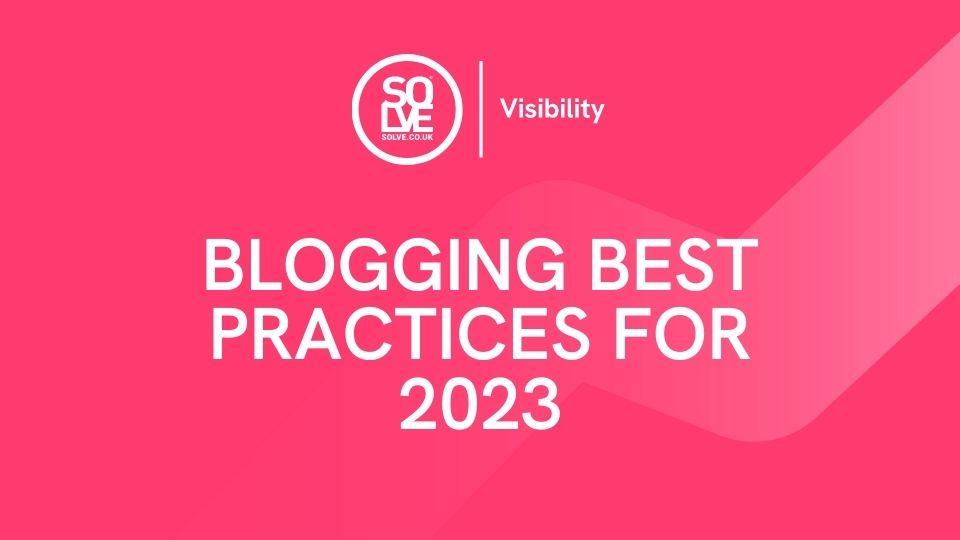
What is a blog?
A blog is a website or section containing regular, frequently updated content known as “posts.” Posts are typically displayed in reverse chronological order, with the most recent post appearing at the top of the page. Blogs can cover a wide range of topics and serve as a platform for individuals or organizations to share their thoughts, opinions, and expertise with a wider audience. Many people use blogs as a creative outlet, to share their personal experiences or knowledge on a particular topic, or to offer news and commentary on current events. Blogs are often written in a casual, conversational style and may include text, images, videos, and other multimedia elements.
Table of Contents
Blog Niches?
There are many different types of blogs, each with its own unique focus and audience. Personal blogs are written by an individual and typically focus on the writer’s thoughts, experiences, and personal interests. Niche blogs, on the other hand, delve deep into a specific topic or industry, such as fashion, technology, or travel. Here is a list of different niches for blogs-
- Fashion
- Technology
- Travel
- Personal development
- Food and cooking
- Health and wellness
- Personal finance
- Parenting
- DIY and home improvement
- Beauty and makeup
- Fitness and exercise
- Photography
- Outdoor and Adventure
- Business and Entrepreneurship
- Automotive
- Gaming
- Personal diary or journaling
- Music, movies, and entertainment
- Sports and outdoor activities
- Gardening and agriculture
- Lifestyle
- Pet-related
- Books and Literature
- Educational and teaching
- Legal, political or social-justice related
- Environmentalism
- Spirituality
“Each month, approximately 409 million people view more than 20 billion pages.” – OptinMonster

Best Practices for Setting up your Blog
Starting a blog is an exciting and rewarding way to share your thoughts, ideas, and expertise with a wider audience. The process of setting up a blog involves choosing a blogging platform, selecting a domain name and hosting provider, customizing the design and layout of your blog, creating and publishing your first post, and promoting your blog to attract readers. There are many options to consider when choosing a blogging platform, such as WordPress, Blogger, and SquareSpace, and it’s important to select a platform that is easy to use, cost-effective and offers a range of customization options and features. Your domain name is the web address that people will use to access your blog, so choose something memorable and relevant to your content. A hosting provider will store and serve your blog’s content to visitors so ensure that the server is trusted and has great response times. Customizing the design and layout of your blog will help you create a professional-looking platform that reflects your brand and appeals to your target audience. Once your blog is set up, you can start creating content and publishing posts.
Subdomain vs Subdirectory
When creating a website, you may need to decide whether to use a subdomain or a subdirectory to organize your content.
A subdomain is a separate section of your website with its own unique domain name. For example, if your main website is example.com, you could create a subdomain for a blog or forum by using a prefix, such as blog.example.com or forum.example.com. Subdomains are not our preferred method as they can become quite difficult to optimise for SEO but can be advantageous for international SEO efforts.
The subdirectory is our preferred method as it focuses link building efforts on a single domain
improving the ability to rank in search results as it provides easier tracking in Google Analytics as a folder within your main website’s domain that contains additional pages or content. For example, if your main website is example.com, you could create a subdirectory for a blog by using a URL like example.com/blog or example.com/forum. Subdirectories are useful for organizing content within your main website and often group related pages together.
Why you would use a Subdomain
You might choose to use a subdomain if you want to create a separate and distinct area of your website that is targeted at a different audience, it also helps if you want to manage multiple brands under one domain name and subdomains help if you have an international SEO strategy.
Why you would use a Subdirectory
Subdirectories are more suitable if you want to organize content within your main website in a logical and hierarchical manner but also help with focusing link-building efforts on a single domain, while also improving the ability to rank in search results and providing easier tracking in Google Analytics.
URL Structure
The structure of your blog’s URLs (Uniform Resource Locators) can have a big impact on your search engine rankings and the user experience. A well-structured URL makes it easy for users to understand the content of a page at a glance and can also help search engines crawl and index your website more effectively. Here are some tips for creating a URL structure for your blog:
- Use descriptive and keyword-rich words: Include relevant keywords in your URLs to help search engines understand the content of your page. This can also make it easier for users to understand what your page is about at a glance. However, be sure to avoid keyword stuffing, as this can harm the user experience and may actually hurt your search engine performance.
- Keep it simple: Your URLs should be easy to read and understand. Use descriptive words separated by hyphens to make the content of your URL clear to both users and search engines. Avoid using special characters or numbers, as these can be difficult for users to read and may not be recognized by search engines.
- Make it short: Long URLs can be difficult for users to remember and maybe truncated in search results, which can make them less effective. Aim to keep your URLs as short as possible while still being descriptive and informative.
- Use hyphens to separate words: Hyphens are a useful tool for separating words in your URLs and making them easier to read. Avoid using underscores, as they can be
Implement GA4 rather than Universal Analytics
Google Analytics 4 (GA4) is the latest version of Google Analytics, a powerful tool for tracking and analyzing website traffic. If you have a blog, you can use GA4 to gain insights into your audience, content performance, and other important metrics. Implementing Google Analytics 4 (GA4) on your blog can provide a range of benefits that can help you better understand your audience, track the performance of your website and content, and identify and fix technical issues. GA4 provides a wealth of data on your website traffic and performance, including page views, sessions, bounce rate, and more. This can help you understand how well your blog is performing and identify areas for improvement. GA4 also allows you to segment your audience by various criteria, such as location, language, device, and more, which can help you better understand who your readers are and what they are interested in.

Best Practices for Blog Structure
The structure of your blog is an important aspect to consider when creating and maintaining your website. A well-structured blog makes it easy for users to find and navigate your content, and can also help search engines understand and index your website more effectively. These are some key points on what to consider when creating a blog.
- Use a clear hierarchy
- Use descriptive and keyword-rich URLs
- Keep it short as possible
- Don’t go further than 3 levels of pages
Blog Categories
Categories are an important element of the structure of your blog. They help to organize your content into logical groups and make it easier for users to find what they are looking for. An example of logical groups for a recipe blog would be
- Starters
- Mains
- Deserts
- Drinks
- Veggie
- Vegan
- Gluten Free
Blog Tags
Tags are used to describe specific details or characteristics of a post. They are typically more specific than categories and are used to help users find posts that are related to specific topics or themes. For example, you might use tags such as “vegan,” “gluten-free,” or “chocolate” to describe the content of a recipe post. We personally prefer to use blog categories to organise our blog content as tagging can cause issues in the future.
RSS Feeds
An RSS feed (Really Simple Syndication) is a web feed that allows users to access updates to websites in a standardized, machine-readable format. RSS feeds are often used to publish frequently updated content, such as blog posts or news articles. When you publish a new post on your blog, it is automatically added to your RSS feed. RSS feeds are mainly used for news outlets rather than information based blogs now, if you’re running a blog website I wouldn’t worry too much about RSS feeds.
Best Practices for Blog Layout
The layout of your blog is an important aspect to consider when creating and maintaining your website. A well-designed layout can help to improve the user experience and make it easy for users to find and navigate your content. Here are some of our best tips for the best blog layout

Clear and Consistent Layout
A clear and consistent layout is crucial for a blog. It helps to create a sense of organization and familiarity for the user, making it easy to navigate and find what they are looking for. This includes using a consistent branding colour scheme, font, and overall design throughout the blog. It helps in creating a professional look and also improves user experience.
Headings and Subheadings
Headings and subheadings are important elements of a blog post. They help to break up text and make it easier for users to scan and read. They also help search engines understand the content of your pages. Use headings and subheadings to organize the content of your post into logical sections and make it easy for users to find what they are looking for.
Bullet Points
Bullet points can be useful for breaking up text and making it easier for users to scan and read. They can also help to emphasize key points and make your content more visually interesting. Use bullet points sparingly and only for lists of related items or important points that you want to highlight.
White Space
White space is the area of a blog that is left blank, without text or images. It is a crucial element of design, helping to create a sense of balance and making it easier for users to read. Use white space to separate different sections of your blog, making it easy for users to scan and read.
Mobile Friendly
More and more people are using their smartphones to access the internet, so it’s important to make sure that your blog is mobile-friendly. This means that it should be easy to read and navigate on a smaller screen, and that the layout should adjust to fit the screen size. Use responsive web design or mobile-specific themes to make sure that your blog is easily accessible on mobile devices. You can check this in Google Search Console under Useablity.
Best Practices for Blog Content
Creating high-quality content that is useful and engaging for your readers is essential for any blog. Some of the key best practices to keep in mind include using a clear and consistent writing style, organizing your content with headings, subheadings, bullet points and whitespace, using images and videos to break up text and make your blog more visually interesting, optimizing for SEO, using categories and tags, adding value to your readers, and promoting your content through social media and email marketing. By following these best practices, you can create high-quality content that will be beneficial for both your reader’s and your blog’s success.

Your Blogging Niche
Choosing a specific niche for your blog is an important step in creating a successful blog. A niche is a specific area of interest or topic that your blog will focus on. By focusing on a specific niche, you can build a targeted audience of readers who are interested in the specific topics that you cover. This will make it easier to create content that is relevant and interesting to your readers and will also help you establish yourself as an expert in your niche.
Blog Length
The length of your blog post is an important consideration when creating content. Long-form content, which is typically over 1000 words, is generally considered to be more comprehensive and in-depth. This type of content is more likely to be shared and is also more likely to rank well in search engines. On the other hand, short-form content, which is typically less than 1000 words, is more easily consumed and is better for shorter attention spans. It’s important to consider the type of content you are creating and the audience you are trying to reach when deciding on the length of your blog post.
Posting Frequency
Posting frequency refers to how often you publish new content on your blog. Consistency is key when it comes to blogging, and publishing new content on a regular basis can help to keep your readers engaged. It is generally recommended to publish new content on a weekly or bi-weekly basis, but this will depend on your niche, your audience, and your schedule.
Blog Topic
Choosing the right topics for your blog is important to keep your readers engaged and interested. It’s important to identify your target audience and the type of content they are looking for. Once you know your target audience
Calls-to-action
Calls-to-action (CTA) are buttons or links that prompt readers to take a specific action, such as signing up for a newsletter, downloading a free resource or buying a product. It’s a crucial element of a blog’s design, they are a way to direct readers to take the next step and become a customer or subscriber. CTAs should be placed prominently and strategically throughout your blog to increase conversion rates.
Grammar
Grammar is an important aspect of creating high-quality content for your blog. Using proper grammar helps to ensure that your content is easy to read and understand, and it also helps to establish your credibility as an expert in your niche. It’s important to proofread your content before publishing to catch any errors or typos. using a grammar-checking tool can also help to improve the quality of your writing.
Best Practices for Blog Images
When adding images to your blog, there are several best practices to keep in mind to ensure that your images are high-quality and properly optimized. One of the main best practices is to use high-resolution images that are visually appealing and relevant to your content. This will help to make your blog more visually interesting and engaging for your readers. Following best practices will ensure that your images are high-quality, properly optimized and accessible, this will help to create a more visually appealing and engaging experience for your readers. We like to use iloveimg.com to optimise our blog images as it has all the necessary tools you need for great optimisation.

Image Quality
The quality of the images used on your blog is crucial for creating a visually appealing and engaging experience for your readers. Use high-resolution images that are clear and in focus. Avoid using low-resolution images or images that are too small, as they may appear pixelated or distorted when enlarged. Using high-quality images also helps in SEO by showing that your website is professional and well-maintained.
Descriptive File Names
When saving your images, use descriptive file names that accurately reflect the content of the image. This will make it easier for users and search engines to understand what your images are about. Also, it makes it easier to identify the images when you need them in the future.
Alt Tags
Alt tags, or alternative text, are used to describe images to users with visual impairments and to search engines. Use clear and descriptive alt tags to describe the content of your images. This will help search engines understand your images and can also improve the accessibility of your blog.
Optimize Your Images
Optimizing your images means reducing the file size of your images without compromising on quality. This will help your images to load faster and ensure that your blog is accessible to users with slower internet connections. Use tools like Compressor to optimize your images.
Use Images To Break Up Text
Images are a powerful way to break up text and make your blog more visually interesting. Use images to illustrate your points, add context to your content, and make your blog more engaging for your readers. Make sure images are relevant and improve the user experience by using appropriate images.
Credit And License Your Images:
If you are using images that are not your own, be sure to credit the source and get permission to use them. Not doing so could result in legal trouble. Additionally, use images that are licensed for commercial use to avoid any legal issues.
Best Practices for Blog CTA
Calls-to-action (CTA) are a key element of any blog, as they encourage readers to take a specific action such as signing up for a newsletter, downloading a free resource, or making a purchase. To ensure that your CTAs are effective and achieve their intended purpose, it’s important to follow some best practices when creating and placing them on your blog.

Actionable and Specific
CTAs should be actionable and specific, clearly communicating the desired action to the reader, such as signing up for a newsletter or making a purchase. Avoid using vague or non-specific language such as “Learn More” as it doesn’t tell the reader what they will get by taking the action.
Clear and Attention-grabbing Design
The design of your CTAs should be clear and attention-grabbing, using contrasting colours and prominent placement to make them stand out on the page. The design should be consistent with the overall design and branding of your blog.
Relevant and Valuable
CTAs should be relevant to the content of the blog post and offer value to the reader. Offer a valuable resource, such as a free guide or a discount, in exchange for the user’s contact information.
Use A/B Testing
Use A/B testing to evaluate the performance of different CTAs, and track the results to optimize their effectiveness over time. This can be done by changing the colour, design, placement, or language of the CTA.
Multiple CTAs
It can be effective to use multiple CTAs throughout a single post, or on different pages of your blog. This allows for different actions to be highlighted at different points in the user’s journey, increasing the chances of conversion.
Track and Analyze
Track and analyze the performance of your CTAs over time by monitoring clicks and conversions. Use this information to optimize the design, placement, and language of your CTAs to improve their performance.
Best Practices for SEO Blogging
Blogging SEO is the process of optimizing a blog to rank higher in search engine results. By following best practices for SEO, bloggers can increase their visibility, attract more traffic, and ultimately grow their audience. Some key best practices for blogging SEO include creating high-quality and unique content, optimizing headlines and meta tags, using keywords effectively, building backlinks, and making sure the blog is mobile-friendly and easily navigable. Other important aspects to consider are the blog’s overall structure, including its URL structure, site architecture and internal linking.
B2B Blogging
A B2B (business-to-business) blog is a blog that focuses on providing valuable information and resources for other businesses, rather than for individual consumers. B2B blogs often cover a wide range of topics such as industry trends, marketing strategies, thought leadership and how-to guides, but their main goal is to provide businesses with insights and solutions to help them succeed.
One of the key benefits of having a B2B blog is that it allows businesses to position themselves as experts and thought leaders in their industry. By providing valuable and informative content, businesses can establish themselves as credible sources of information, which can help to attract new customers and partners. Additionally, B2B blogs can also help to establish trust and build relationships with current customers, helping to generate more leads and increase sales.
A B2B blog can be a great way to generate leads and improve the visibility of a business online, particularly when it comes to lead generation and conversion. By providing value to readers with content that answers specific questions and tackles specific pain points, businesses can nurture leads over time, keeping them engaged and moving them closer to a sale.

Target Audience
Defining a target audience for a B2B blog is crucial for creating content that resonates with readers and meets their specific needs. Identify the type of business and the decision-makers within those businesses that you want to reach, and tailor your content accordingly. By understanding your target audience, you can create content that addresses their specific pain points, questions, and goals.
Data And Research To Support Your Points
In a B2B context, it’s important to use data and research to support the points you make in your blog content. This helps to establish credibility and authority and makes it clear that you understand the industry. Use relevant statistics, case studies and research to back up your arguments and provide a solid foundation for your insights.
Professional And Informative Tone
A B2B blog should have a professional and informative tone. Avoid using overly casual language and focus on providing valuable insights and practical solutions. Keep in mind that the goal is to educate and provide helpful information, not to promote your products or services directly.
Include CTAs
Include calls-to-action (CTAs) throughout your B2B blog content to guide readers to take a specific action such as signing up for a newsletter, downloading a resource, or scheduling a consultation. This will help to convert leads and can be a great way to nurture a relationship over time. Make sure the CTAs are relevant to the content and provide value to the reader.
Other things to think about with your blog
Social Sharing
Social sharing is an important aspect of a blog. By making it easy for readers to share your content on social media platforms, you can reach a wider audience and attract more traffic to your blog. Consider integrating social media sharing buttons on your blog, and use your social media accounts to promote your content and engage with your audience.
Blog CTA
Calls-to-action (CTA) are an important element of a blog, as they encourage readers to take a specific action such as signing up for a newsletter, downloading a free resource, or making a purchase. To ensure that your CTAs are effective, it’s important to use clear and specific language, prominent placement, and contrasting colours. Consider using multiple CTAs throughout your blog to guide your readers to take different actions.
The goal of the blog
Defining the goal of your blog is crucial for creating content that resonates with your target audience and helps you to achieve your business objectives. Some common goals for blogs include increasing visibility, attracting more traffic, generating leads, and building relationships with customers. Once you have identified the goal of your blog, you can create content that aligns with that goal and use the appropriate metrics to measure your progress towards that goal.
“Marketers who prioritize blogging are 13x more likely to have a positive ROI on their efforts.“
Conclusion
In conclusion, creating and maintaining a successful blog requires a combination of high-quality content, search engine optimization, user experience, social media integration, analytics, and effective calls to action. By following best practices for blogging, businesses can establish themselves as thought leaders, generate leads, attract more traffic and build relationships with customers. Additionally, a strong blog can also help to increase visibility and positions your business as a reliable source of information and solutions for your target audience. By taking the time to implement these best practices, businesses can create an effective and engaging blog that helps to achieve their business goals.
Need Advice on growing your business online presence? We have a range of tailored marketing services with proven success to grow your brand.





